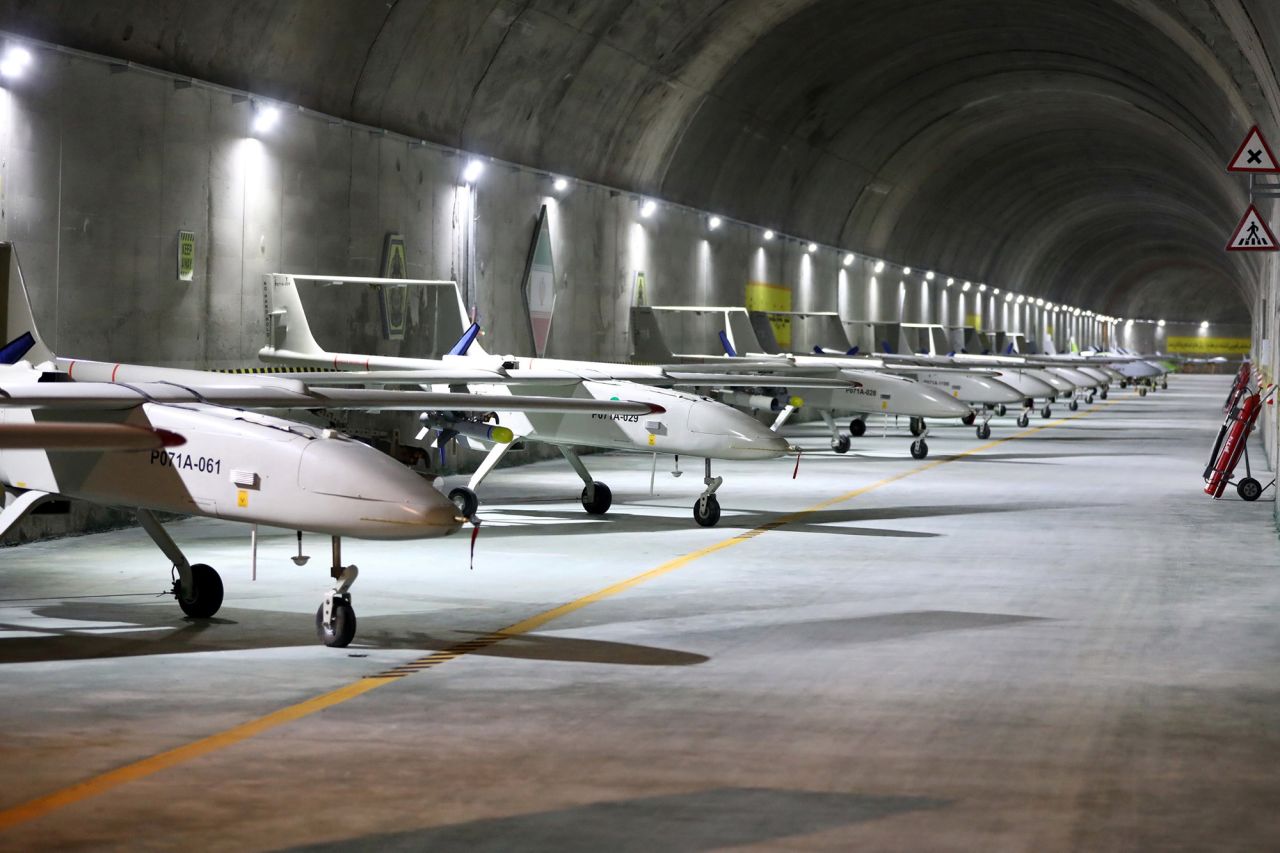This is the drone shot down in Ukraine, which would have been made in Iran 3:03
(CNN Spanish) --
For weeks Russia has been bombing Ukrainian cities with military drones allegedly provided by Iran, according to reports from Ukraine and Western countries.
Iran denies supplying these drones, although Ukraine has shot down some of these devices and provided evidence of their alleged origin.
Iran sent military to Crimea to train Russian forces in the use of drones
At the moment, the presence or shipment of the conventional drones of Iranian origin Mohajer-6, Shahed-129 and Shahed-191, unmanned aircraft capable of carrying weapons or carrying out surveillance tasks, and also the Shahed-136, of the type loitering ammunition that crashes into its targets, self-destructing.
These drones, which operate as cheaper versions - a Shahed-136 costs around US$20,000 - and less capable versions of the ballistic and cruise missiles that Russia also uses in Ukraine, have been launched against numerous targets, causing deaths and damage to Ukraine's energy infrastructure.
Furthermore, Ukrainian forces say they have shot down more than 300 of these drones since mid-September.
Now, Ukrainian intelligence says that Iran plans to send a new batch of 200 drones to Russia which includes the Arash-2, a long-range conventional drone, as well as Mojaher-6 and Shahed-136.
CNN has not been able to independently verify this information.
advertising
The report notes that the drones are shipped unassembled and then assembled in Russia, where they are also "repainted and applied with Russian markings."
In addition, US intelligence sources told CNN that Iran has sent military personnel to the Crimean peninsula, occupied by Russia since 2014, to train and advise the Russian military on the use of these drones.
What can the Arash-2 do, and what can't?
If the report on the latest shipments is confirmed, the presence of Arash-2 represents an increase in the offensive capabilities of the drone force deployed by Russia in Ukraine, although it is not clear that this can have a real impact on the war.
These are loitering munitions like the Shahed-136, that is, they have a single use and crash into their targets, but they are more sophisticated and can carry more weapons and explosives than the Shahed-136, and with a range greater than 2,000 kilometers, according to Iranian reports.
Up to 50 kilos of explosives contain the drones that Russia uses against Ukraine 3:38
These numbers would put the Arash-2 among the drones with the longest range in the world, although the information has not been confirmed by Western sources and the Iranians often exaggerate the capabilities of their weapons systems in their reports, for propaganda purposes.
In any case, and even with their greater capabilities, the Arash-2s would arrive, if the reports are confirmed, to strengthen Russia's drone offensive, at a time when Moscow seems to be rapidly consuming its reserves of ballistic and cruise missiles. , much more powerful, precise, difficult to shoot down and longer range weapons than drones.
And even with its greater benefits, the Arash-2, like other drones, fly low, slow and with a low destructive capacity —so much so that they are only used against civilian or unfortified targets— and less than that of other conventional weapons systems. .
A strategy that is not what it seems
According to Lauren Kahn, an expert at the Council on Foreign Relations, a
think tank
based in New York, the use of drones has had limited effects in the war, and Ukrainian forces have managed to shoot down between 60 and 86% of the drones launched against them interfering with their systems and using light anti-aircraft weapons, figures from an intelligence report by the United Kingdom Ministry of Defense.
Drones seen at an underground site at an undisclosed location in Iran, in this handheld image obtained on May 28, 2022. (Credit: Iranian Army/WANA/Reuters)
Why then would Russia use them?
Because appearing is an effective psychological weapon against the population —the mere noise of its small engines, similar to that of a lawn mower, provokes terror— and because the attacks force Ukraine to deploy valuable resources —its anti-aircraft weapon systems— away from the front, according to Kahn.
Steven Feldstein of the Carnegie Endowment
think tank
agrees that the use of drones is for psychological purposes: to provoke fear and intimidation in order to strike at Ukrainian morale and will to fight.
The mere sensational use of the term "kamikaze drones" to describe loitering munitions fits into this Russian-driven narrative, according to the expert.
History, however, seems to be against this psychological strategy.
Germany used it against the UK in 1940-1941, the so-called "Blitz" - the bombing of London and other cities - and this only strengthened the British will to fight.
The situation was then reversed: the United Kingdom and the United States razed Germany's largest cities between 1943 and 1945 in the midst of their strategic bombing campaign, and the Germans continued to fight desperately until Soviet tanks entered Berlin.
War in UkraineIranNews from Russia





